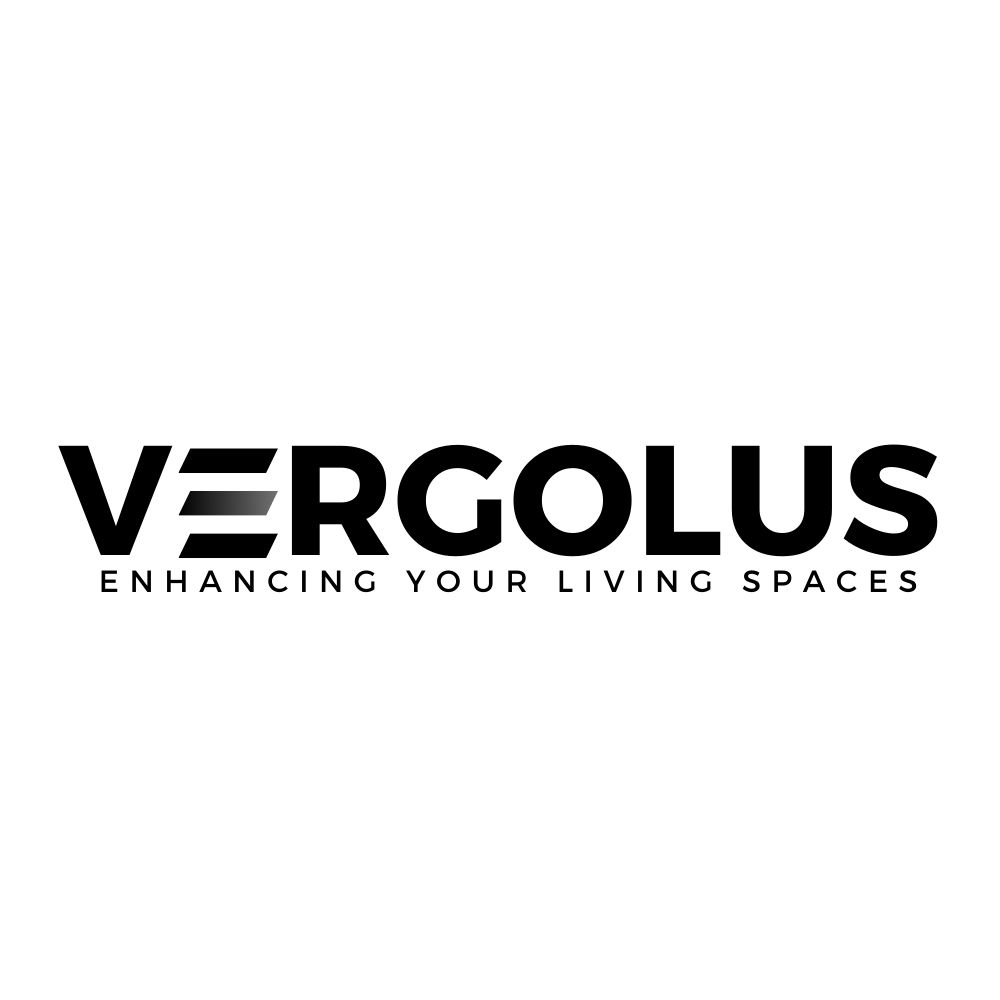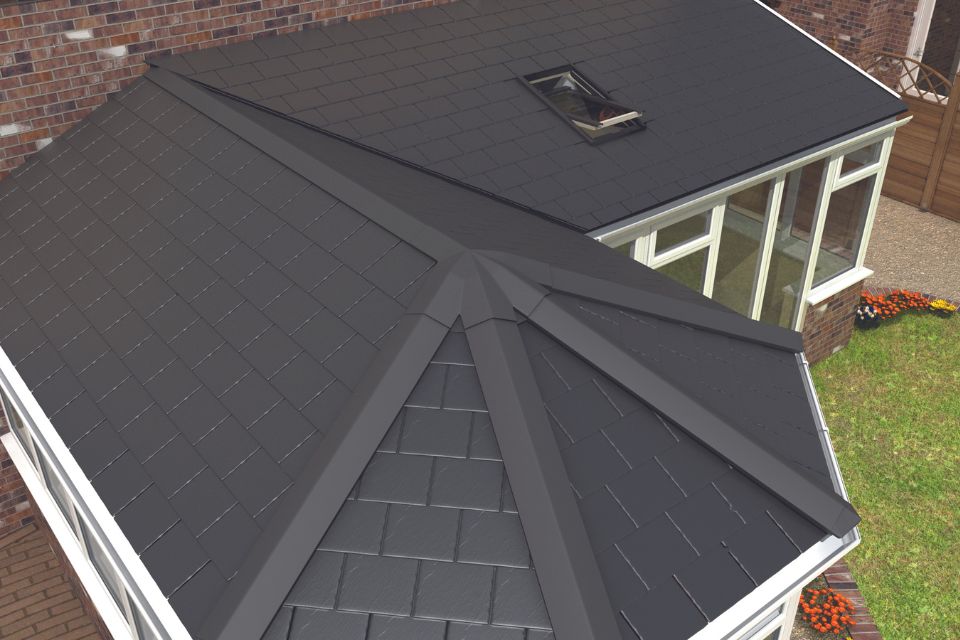What Is a Warm Roof?
What is a warm roof? The construction industry has witnessed a continual evolution in roofing techniques and materials over the years. One such advancement that has gained popularity is the warm roof system. In this article, we will delve into the intricacies of warm roofs, exploring what they are, how they work, and their advantages over traditional roofing systems.
Understanding the Warm Roof System: What Is a Warm Roof?
A warm roof refers to a type of roofing system where the insulation is installed above the structural deck, thereby keeping the entire structure and the living space beneath it at a consistent, warm temperature. This stands in contrast to cold roofs, where insulation is placed between the rafters, allowing the loft space to be colder than the living area.
Components of a Warm Roof System
To better understand how warm roofs function, let’s examine the key components that make up this system:
- Structural Deck: The base layer of the roof that provides structural support.
- Vapour Control Layer: A membrane that prevents moisture from entering the roof structure.
- Insulation Material: Placed above the structural deck, insulation materials vary but commonly include rigid foam boards or mineral wool.
- Waterproof Membrane: Protects the insulation and structural deck from water ingress.
- Ventilation: While not always present, some warm roofs incorporate a ventilation layer to manage moisture and prevent condensation.
How Does a Warm Roof Work?
Now that we’ve established the basic components of a warm roof, let’s explore how this system works to provide effective insulation and temperature control.
Insulating Effectiveness
The primary function of a warm roof is to create a well-insulated barrier against heat loss. By positioning the insulation above the structural deck, the entire roof structure is maintained at a consistent temperature. This design prevents thermal bridging, where heat can escape through the structural elements, ensuring a more energy-efficient building.
Moisture Management
The inclusion of a vapour control layer is crucial for managing moisture within the roof structure. This layer prevents warm, moist air from inside the building from penetrating the insulation and condensing. Effective moisture management is essential for preventing issues such as
mold growth and structural damage.
All Year Round Benefits
Unlike cold roofs, which can be prone to condensation issues and temperature fluctuations, warm roofs offer year-round benefits. They help maintain a comfortable living environment in winter by retaining heat, while in summer, the insulation acts as a barrier against excessive heat gain.
The adoption of warm roof systems in construction has become increasingly popular due to the array of year-round benefits they offer. Unlike traditional roofing systems, warm roofs provide a range of advantages that contribute to enhanced comfort, energy efficiency, and overall building performance. In this section, we will delve into the year-round benefits of warm roofs and explore how they make a significant difference in various climates and seasons.
Advantages of Warm Roofs
Now that we have a foundational understanding of how warm roofs work, let’s explore the numerous advantages they offer over traditional roofing systems.
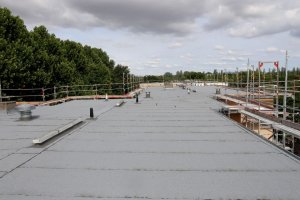
1. Improved Energy Efficiency
The insulation placement in warm roofs significantly enhances energy efficiency by minimising heat loss. This results in lower heating costs during colder months, contributing to a more sustainable and cost-effective building.
Energy Efficiency in Winter: During winter, traditional roofing systems may experience heat loss through thermal bridging, where heat escapes through structural elements. Warm roofs, with insulation placed above the structural deck, effectively minimise thermal bridging, resulting in improved energy efficiency. Reduced heat loss translates to lower heating costs, making warm roofs a cost-effective solution for maintaining warmth in colder climates.
2. Consistent Temperature Control
Warm roofs provide a consistent temperature throughout the living space, avoiding the temperature differentials commonly found in cold roofs. This creates a more comfortable environment for occupants.
One of the standout advantages of warm roofs is the ability to provide consistent thermal comfort throughout the year. In colder months, the insulation above the structural deck prevents heat loss, maintaining a warm and comfortable living space. In warmer months, the insulation acts as a barrier against excessive heat gain, ensuring a temperate environment inside the building. This consistency in temperature contributes to a more pleasant and enjoyable living or working space.
3. Enhanced Moisture Resistance
The incorporation of a vapour control layer in warm roofs effectively manages moisture, reducing the risk of condensation-related issues. This is particularly important for preventing structural damage and maintaining indoor air quality.
Effective moisture management is a critical aspect of building durability and indoor air quality. Warm roofs incorporate a vapour control layer, preventing warm, moist air from inside the building from penetrating the insulation and causing condensation. This year-round moisture management is essential for preventing issues such as
mold growth, rot, and structural damage, ensuring the longevity of the roofing system.
4. Versatility in Insulation Materials
Warm roofs accommodate a variety of insulation materials, allowing for flexibility in design and performance. Common materials include rigid foam boards, mineral wool, and other high-performance insulating materials.
Due to their versatility, they can be designed to suit various climates, making them suitable for installation in different regions. Whether in cold climates where heat retention is crucial or in warm climates where heat gain control is essential, warm roofs provide adaptable solutions. The choice of insulation material and design can be customised to meet the specific requirements of the local climate, ensuring optimal performance year-round.
5. Reduced Risk of Roof Leaks
The placement of the waterproof membrane over the insulation in warm roofs significantly reduces the risk of roof leaks and water ingress. This enhances the overall durability of the roofing system and prolongs its lifespan. This waterproof layer acts as a protective barrier, preventing moisture from penetrating the roof structure. The enhanced durability and weather resistance contribute to the longevity of the roofing system, providing peace of mind to building owners all year-round.
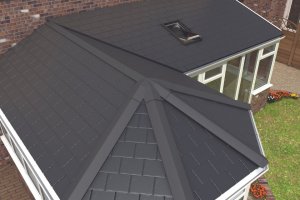 6. Minimal Thermal Bridging and Maintenance
6. Minimal Thermal Bridging and Maintenance
The design of warm roofs minimises thermal bridging, a phenomenon where heat escapes through structural elements. This results in a more efficient insulation barrier and further reduces energy consumption. The design and construction of warm roofs often result in minimal maintenance requirements. The reduced risk of issues such as condensation, mould growth, and leaks means that building owners can enjoy a roofing system that requires less frequent inspections and repairs. This not only saves time and effort but also reduces the overall maintenance costs associated with the roof.
7. Adaptable to Retrofitting
Warm roof systems can be adapted for retrofitting existing buildings, providing an opportunity to upgrade insulation without major structural changes. This makes them a practical choice for improving the energy performance of older structures.
8. Enhanced Fire Resistance
Many warm roof insulation materials have excellent fire-resistant properties, contributing to the overall safety of the building. This is particularly important in regions with stringent building codes and safety standards.
9. Increased Property Value
The energy efficiency and overall performance of warm roof systems can enhance the property value. Potential buyers or tenants often see these features as attractive and cost-saving, making the property more desirable.
10. Sustainable Building Practice
Sustainable building practices have become a focal point in the construction industry, driven by environmental concerns, energy efficiency goals, and a growing awareness of the impact of buildings on the planet. In the
United Kingdom, where the built environment plays a significant role in energy consumption and carbon emissions, sustainable building practices have gained prominence.
Choosing a warm roof system aligns with sustainable building practices by improving energy efficiency and reducing the environmental impact of the structure.
11. Enhanced Indoor Air Quality
The effective moisture management in warm roofs contributes to improved indoor air quality. By preventing condensation and mould growth, warm roofs create a healthier living or working environment for occupants. This is particularly beneficial for individuals with respiratory conditions or allergies, as it helps maintain a clean and breathable indoor atmosphere all year-round.
12. Adaptability for Retrofitting
Warm roofs offer the advantage of adaptability, making them suitable for retrofitting existing buildings. The ability to upgrade insulation without major structural changes makes warm roofs a practical solution for improving the energy efficiency of older structures. This adaptability ensures that the year-round benefits of warm roofs can be extended to a wide range of buildings.
Understanding Sustainable Building in the UK
1. Regulatory Landscape
The UK has implemented stringent regulations and standards to promote sustainable building practices. The
Code for Sustainable Homes and the more recent
Building Regulations Part L are crucial frameworks governing energy efficiency and environmental performance in new constructions. Additionally, certifications such as
BREEAM (
Building Research Establishment Environmental Assessment Method) provide a comprehensive assessment of a building’s sustainability across various criteria.
2. Energy Efficiency Standards
The UK government has set ambitious targets for achieving
net-zero carbon emissions by 2050. As part of this commitment, there is a strong emphasis on improving energy efficiency in buildings. Building Regulations Part L establishes standards for the conservation of fuel and power, including requirements for insulation, heating systems, and renewable energy sources.
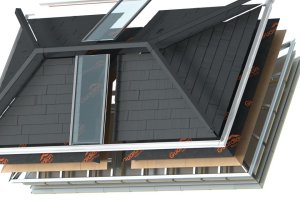
Frequently Asked Questions (FAQs)
Q1: What Is the Difference Between a Warm Roof and a Cold Roof?
A warm roof has insulation installed above the structural deck, maintaining a consistent temperature throughout the structure. In contrast, a cold roof has insulation between the rafters, allowing the loft space to be colder than the living area.
Q2: How Does a Warm Roof Prevent Condensation?
The inclusion of a vapour control layer in a warm roof system prevents warm, moist air from inside the building from penetrating the insulation and condensing. This effective moisture management reduces the risk of condensation-related issues.
Q3: Can Warm Roofs Be Used for Retrofitting?
Yes, warm roof systems can be adapted for retrofitting existing buildings, providing an opportunity to upgrade insulation without major structural changes. This makes them a practical choice for improving the energy performance of older structures.
Q4: What Insulation Materials Are Suitable for Warm Roofs?
Warm roofs accommodate a variety of insulation materials, including rigid foam boards, mineral wool, and other high-performance insulating materials. The choice of insulation material depends on factors such as thermal efficiency and building requirements.
Q5: Do Warm Roofs Have a Ventilation System?
While not always present, some warm roofs incorporate a ventilation layer to manage moisture and prevent condensation. The inclusion of ventilation depends on the specific design and requirements of the building.
Q6: Are Warm Roofs Fire-Resistant?
Many warm roof insulation materials have excellent fire-resistant properties, contributing to the overall safety of the building. It’s essential to choose insulation materials that comply with local building codes and safety standards.
Q7: How Do Warm Roofs Contribute to Energy Efficiency?
Warm roofs significantly enhance energy efficiency by minimizing heat loss. The insulation placement above the structural deck creates a more efficient barrier against thermal bridging, reducing overall energy consumption.
Q8: Can Warm Roofs Reduce Heating Costs?
Yes, the improved energy efficiency of warm roofs can lead to lower heating costs during colder months. The consistent temperature control provided by these systems contributes to a more cost-effective and sustainable building.
Q9: Are Warm Roofs Suitable for All Climates?
Warm roofs are versatile and can be designed to suit various climates. Proper insulation and moisture management ensure that warm roofs perform well in both cold and warm climates, providing all year-round benefits.
Q10: How Do Warm Roofs Contribute to Sustainable Building Practices?
Choosing a warm roof system aligns with sustainable building practices by improving energy efficiency and reducing the environmental impact of the structure.
A significant advancement in roofing technology
The warm roof system represents a significant advancement in roofing technology, offering numerous benefits in terms of energy efficiency, temperature control, and overall building performance. Whether used in new constructions or retrofitted into existing buildings, warm roofs provide a sustainable and cost-effective solution for modern construction needs. Understanding the key components, functionality, and advantages of warm roofs is essential for architects, builders, and homeowners seeking to make informed decisions about roofing systems.
If you would like to know more about our warm roof service, please do not hesitate to
contact us via email at sales@vergolus.co.uk or at 0800 433 2353.
 6. Minimal Thermal Bridging and Maintenance
The design of warm roofs minimises thermal bridging, a phenomenon where heat escapes through structural elements. This results in a more efficient insulation barrier and further reduces energy consumption. The design and construction of warm roofs often result in minimal maintenance requirements. The reduced risk of issues such as condensation, mould growth, and leaks means that building owners can enjoy a roofing system that requires less frequent inspections and repairs. This not only saves time and effort but also reduces the overall maintenance costs associated with the roof.
7. Adaptable to Retrofitting
Warm roof systems can be adapted for retrofitting existing buildings, providing an opportunity to upgrade insulation without major structural changes. This makes them a practical choice for improving the energy performance of older structures.
8. Enhanced Fire Resistance
Many warm roof insulation materials have excellent fire-resistant properties, contributing to the overall safety of the building. This is particularly important in regions with stringent building codes and safety standards.
9. Increased Property Value
The energy efficiency and overall performance of warm roof systems can enhance the property value. Potential buyers or tenants often see these features as attractive and cost-saving, making the property more desirable.
10. Sustainable Building Practice
Sustainable building practices have become a focal point in the construction industry, driven by environmental concerns, energy efficiency goals, and a growing awareness of the impact of buildings on the planet. In the United Kingdom, where the built environment plays a significant role in energy consumption and carbon emissions, sustainable building practices have gained prominence.
Choosing a warm roof system aligns with sustainable building practices by improving energy efficiency and reducing the environmental impact of the structure.
11. Enhanced Indoor Air Quality
The effective moisture management in warm roofs contributes to improved indoor air quality. By preventing condensation and mould growth, warm roofs create a healthier living or working environment for occupants. This is particularly beneficial for individuals with respiratory conditions or allergies, as it helps maintain a clean and breathable indoor atmosphere all year-round.
12. Adaptability for Retrofitting
Warm roofs offer the advantage of adaptability, making them suitable for retrofitting existing buildings. The ability to upgrade insulation without major structural changes makes warm roofs a practical solution for improving the energy efficiency of older structures. This adaptability ensures that the year-round benefits of warm roofs can be extended to a wide range of buildings.
6. Minimal Thermal Bridging and Maintenance
The design of warm roofs minimises thermal bridging, a phenomenon where heat escapes through structural elements. This results in a more efficient insulation barrier and further reduces energy consumption. The design and construction of warm roofs often result in minimal maintenance requirements. The reduced risk of issues such as condensation, mould growth, and leaks means that building owners can enjoy a roofing system that requires less frequent inspections and repairs. This not only saves time and effort but also reduces the overall maintenance costs associated with the roof.
7. Adaptable to Retrofitting
Warm roof systems can be adapted for retrofitting existing buildings, providing an opportunity to upgrade insulation without major structural changes. This makes them a practical choice for improving the energy performance of older structures.
8. Enhanced Fire Resistance
Many warm roof insulation materials have excellent fire-resistant properties, contributing to the overall safety of the building. This is particularly important in regions with stringent building codes and safety standards.
9. Increased Property Value
The energy efficiency and overall performance of warm roof systems can enhance the property value. Potential buyers or tenants often see these features as attractive and cost-saving, making the property more desirable.
10. Sustainable Building Practice
Sustainable building practices have become a focal point in the construction industry, driven by environmental concerns, energy efficiency goals, and a growing awareness of the impact of buildings on the planet. In the United Kingdom, where the built environment plays a significant role in energy consumption and carbon emissions, sustainable building practices have gained prominence.
Choosing a warm roof system aligns with sustainable building practices by improving energy efficiency and reducing the environmental impact of the structure.
11. Enhanced Indoor Air Quality
The effective moisture management in warm roofs contributes to improved indoor air quality. By preventing condensation and mould growth, warm roofs create a healthier living or working environment for occupants. This is particularly beneficial for individuals with respiratory conditions or allergies, as it helps maintain a clean and breathable indoor atmosphere all year-round.
12. Adaptability for Retrofitting
Warm roofs offer the advantage of adaptability, making them suitable for retrofitting existing buildings. The ability to upgrade insulation without major structural changes makes warm roofs a practical solution for improving the energy efficiency of older structures. This adaptability ensures that the year-round benefits of warm roofs can be extended to a wide range of buildings.


